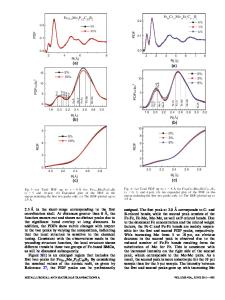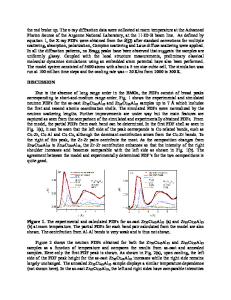Alloying Effects on the Hardness and Ductility of Metallic Glasses
- PDF / 533,404 Bytes
- 5 Pages / 417.6 x 639 pts Page_size
- 112 Downloads / 354 Views
ALLOYING EFFECTS ON THE HARDNESS AND DUCTILITY OF METALLIC GLASSES
B. L. MORDIKE and G. HUNGER Institut far Werkstoffkunde und Werkstofftechnik, Technische Universit&t Clausthal, D-3392 Clausthal-Zellerfeld,
FRG
ABSTRACT Hardness and ductility in Fe-M-B alloys were found to be directly dependent on the strength of the metal-metalloid bonding. This behaviour, as well as the annealing embrittlement, can be explained by the localized viscous flow model of heterogeneous deformation.
INTRODUCTION Metallic glasses exhibit very high mechanical strength and yet can be plastically deformed. This combination of properties is the result of the specific heterogeneous deformation mechanism describing the formation and propagation of shear bands; Masumoto, Maddin [1]. Steif, Spaepen and Hutchinson [2] have quantitatively described the localized viscous flow model and have calculated the critical shear stress for the formation of the first shear band. The main parameters were the quenched-in free volume and the activation energy AH for a site change process. Measurements of the hardness and fracture toughness were carried out on metallic glasses, systematically varying the composition. The results were used to check the above model.
EXPERIMENTAL DETAILS Vacuum melt spun tapes of the following compositions were investigated: a) Fel00_yBy with b)
(Fe
100
x Mx)
1
Data Loading...











